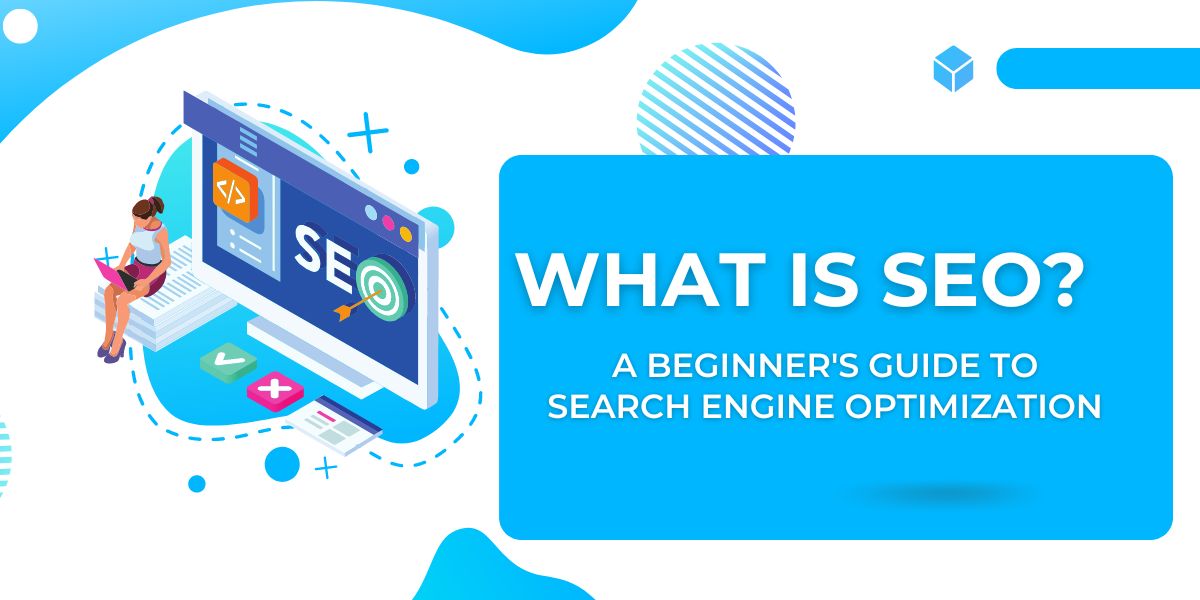What is SEO? SEO, or search engine optimization, is the art of optimizing your web pages for search engines like Google or Bing so that they rank on the first page of search results for a particular user query.
Google receives billions of monthly viewers; consequently, if you want your content to be noticed by more people, you must optimize it for search. This post is about what SEO is, and it will show you how to do it so that your content ranks higher on Google and gets more people’s views. To master SEO and make your content stand out, you must have a profound grasp of how search engines work.
The Three Pillars Of SEO
Digital marketers must know how to make their brand or website easily found by searchers. Staying updated on SEO changes is vital to staying ahead. The core principles of SEO remain consistent despite minor tweaks. To succeed, focus on three essential components and act consistently.
What Is Technical SEO?
Technical SEO is the procedure of improving a website’s technical components to maximize its visibility and efficacy in search engine results. In contrast to on-page and off-page SEO, which focus on content and external elements, specialized SEO deals with the invisible components that impact how search engines crawl your web pages, understand your content, and then index your webpage in the SERP.
Here are some Critical aspects of Technical SEO:
Website Speed: Ensuring your website loads fast is important for a better user experience and search engine rankings. Technical SEO involves optimizing server response times, image sizes, and code to improve website speed.
Mobile-Friendliness: As more people use the internet via mobile devices, it is important that your website must be mobile-friendly. Make sure your website is responsive and appealing across a range of screen sizes by using technical SEO.
Website Indexing: Technical SEO ensures that search engines can easily crawl and index all your website’s pages. Properly setting up robots.txt and XML sitemaps help search engines understand your site’s structure.
URL Structure: Creating clear, user-friendly URLs can improve search engine crawling and user experience. Descriptive URLs that include relevant keywords are more helpful to search engines and visitors.
Canonicalization: if the material on your various pages is similar. To tell Google crawlers which page is the original and to index it in the SERP, use the canonical tag.
Structured Data Markup: Implementing structured data markup, such as Schema.org, can provide additional context to search engines about the content on your website. This can lead to rich snippets and enhanced search results.
HTTPS and Website Security: Switching to HTTPS (secure HTTP) and implementing SSL certificates enhances website security and boosts search engine rankings since Google favors certain websites.
Website Crawling and Errors: Regularly monitoring and fixing crawl errors, broken links, and 404 pages ensures that search engines can access and index your site correctly.
Website Architecture: Organizing your website’s structure and navigation helps users and search engines find and understand your content better.
Page Rendering and JavaScript: Ensuring search engines can correctly render and understand JavaScript-based content on your website is essential for optimal indexing and ranking.
What Is On-Page SEO?
On-page SEO refers to optimization techniques applied directly to a webpage’s content to boost its exposure and search engine ranking. These techniques optimize various web page components to make them more search engine-friendly.
Here are some Critical Aspects of On-page SEO:
Keyword Optimization: Research and use relevant keywords in your webpage’s content, headings, titles, and meta tags. These keywords should match what users search for and be integrated naturally into the content.
High-Quality Content: Create meaningful, informative, and entertaining material that addresses your target audience’s requirements and interests. High-quality content attracts more visitors and encourages them to stay on your website longer.
Title Tags: Use title tags that appropriately reflect the content of your webpage and are descriptive and captivating. The title tag is crucial for drawing clicks because it appears as a clickable headline in search results.
Meta Descriptions: Craft unique and informative meta descriptions that concisely summarise your webpage’s content. While meta descriptions don’t directly impact search rankings, they can influence click-through rates and user engagement.
URL Structure: Create short yet descriptive URLs for your blog posts that incorporate your keyword. Remember not to add dates in URLs.
Header Tags Use header tags H1, H2, and H3, to organize your blog to make it easier for search engines to understand the information hierarchy on your page.
Image Optimization: Optimize images using descriptive alt text, which helps search engines understand the content of the photos. This practice also improves accessibility for users with visual impairments.
Internal Linking: Internal linking is important because of two reasons. One is that it helps readers to easily navigate to other important articles on your website. Another thing is it helps google crawlers to go from one page to another easily it makes sure that all of your pages get crawled and indexed
What Is Off-Page SEO
Off-page SEO, or off-site SEO, involves optimizing factors outside your website. Unlike on-page SEO, which focuses on optimizing elements within your website, off-page SEO concentrates on activities and strategies that take place off your website but still impact its online reputation and popularity.
Here are some critical aspects of off-page SEO:
Backlink Building: Obtaining high-quality backlinks from other trustworthy and relevant websites is an important off-page SEO tactic. When other websites link to your content, for Google it is a vote of confidence in you from other websites. Hence it increases your authority and helps in rankings.
Social Media Engagement: Active engagement on social media platforms may increase the reach of your content and bring more people to your website. Share and promote your material on social media for more backlinks and attention.
Brand Mentions and Citations: Monitoring and obtaining mentions of your brand or website on other websites, even without a direct link, can contribute to your website’s credibility and authority.
Guest Blogging: Writing guest articles for other renowned websites in your field helps you to reach new audiences and position yourself as an authority in your market. It may also result in valuable backlinks to your website.
Online Reviews and Testimonials: Positive reviews and testimonials from customers or clients can boost your website’s reputation and credibility, which may positively influence search engine rankings.
Local SEO: Local search optimization is crucial for companies with actual locations. This entails claiming your Google My Business listing, adding your business to local directories, and promoting client reviews.
Content Promotion: Actively advertising your content through email marketing, newsletters, and social media may bring in more visitors and prospective backlinks.
Off-page SEO works with on-page SEO to strengthen your website’s overall authority and reputation online. You can increase the visibility of your website, get more organic visitors, and boost your online presence by implementing these off-page SEO strategies.
Building a positive online reputation takes time, so consistency and patience are keys to off-page SEO.
How Does SEO Work? SEO Best Practices For Beginners in 2023
SEO is like a compass that guides search engines like Google to find and understand your website better. When someone searches for something, these search engines use intelligent algorithms to analyze millions of websites and decide which ones are most relevant and helpful for that particular search.

Find the Right Keywords:
Look for words that people use to find content like yours. These particular words will help more people discover your blog.
Use these keywords in your articles to make your blog easier to find on search engines.
Create Great Content:
You must write content better than your competitors and look for shortcomings in your competitor’s content. Fill that content gap, and you are good to go.
Write interesting and helpful articles that people will love to read.
Longer articles are better because search engines like them more.
Optimize Your Blog:
Ensure your titles, headings, URLs, and meta tags are set up correctly for search engines.
Write good meta descriptions that make people want to click on your blog.
Be Mobile-Friendly:
Ensure your blog looks good on phones and tablets, not just computers.
A fast-loading blog keeps visitors happy and coming back for more.
Use Images and Videos:
Add pictures, infographics, and videos to make your blog more interesting.
Remember to use alt tags for images so search engines know what they are about.
Get Backlinks:
Get other websites to link to your blog. It makes your blog look important to search engines.
Focus on getting links from good websites, not just any site.
Link Within Your Blog:
Put links in your articles to other articles in your blog.
This helps readers explore more of your blog and keeps them interested.
Aim for Featured Snippets:
Try to answer common questions in your articles. Search engines might show your answer at the top of search results.
Being featured makes your blog stand out and attracts more readers.
Use Schema Markup:
Use a unique code on your blog to give search engines more information about your content.
This can make your blog look more appealing in search results.
Make Your Blog User-Friendly:
Make your blog easy to use and navigate.
A good user experience keeps people happy and coming back for more.
Stay Updated with SEO Changes:
Keep an eye on changes in search engines’ rules.
Stay flexible and adjust your blog accordingly.
Track Your Blog’s Performance:
Use tools to see how well your blog is doing.
Understanding your audience helps you make your blog even better.
Note: Keep learning and adapting to the digital world’s changes. As you use these simple tips, watch your blog rise to new heights, attracting more readers and making them fall in love with your fantastic content!
Best SEO Tools
SEO uses various tools to enhance, manage, and measure its impact. Marketers use tools like Semrush for keyword research and ranking data, Google Analytics for real-time insights, Yoast SEO for on-page optimization, and Ahrefs for website auditing. SpyFu helps with competitor research, and Google Trends identifies content trends. Bing Webmaster offers backlink profiles, and consultants provide expert guidance for effective strategies. These tools are important for success in the ever-changing world of SEO.
FAQs
What is content-led SEO?
Content-led SEO is an approach that prioritizes creating valuable, relevant, and high-quality content to attract organic traffic and satisfy users’ search intent. It focuses on delivering value to the audience rather than solely optimizing for search engines.
How Do Search Engines Work?
Search engines use bots to crawl the internet and discover web pages (crawling), then store the information in a database (indexing). Finally, they rank the pages based on relevance and quality to show the most fitting results to users.
What is the role of SEO?
SEO (Search Engine Optimization) aims to boost your website’s ranking in regular search results. It uses various strategies for searches like ads, shopping, and local listings.
Despite the competition on search result pages, SEO remains valuable. Google handles billions of searches daily, and the unpaid search results receive significant traffic.
When your website ranks high in organic search results, you can attract more visitors without paying for each click. Though it requires effort and investment, the traffic gained through good SEO is entirely free.
Summary of what we learned today
Today we learned about what is SEO, A short answer to What is SEO? Is that it is the science and Art of optimization for search engines So that your webpages rank on the first page of the Google SERP.
Then we discussed three types of SEO that is on-page SEO, off-page SEO, technical SEO, and what are the factors to look for while optimizing your webpage.
Your website’s ranking improves by using relevant keywords, good content, and backlinks. Mastering SEO leads to more visibility, traffic, and online authority.

